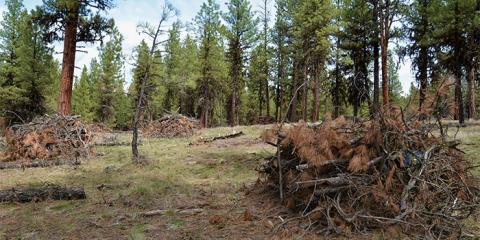Getting down to basics with woody biomass
June 11, 2013
One of the conundrums of restoring federal forest health and fire resiliency is what to do with the immense amount of woody biomass growing in our east-side forests. Present estimates project that as many as 6.4 million bone-dry tons of small-diameter trees too small to saw into lumber could be available annually for the next 20 years. That’s annually.
Nearly 6 million BDTs of biomass are already available annually from mill residuals – chips, shavings and sawdust left over from wood and plywood manufacturing. That market is well-established and little is wasted. Another 500,000 BDTs comes from logging slash recovered and used for energy production. About twice that much is left in the woods to be burned or to decay.
OFRI’s new special report and accompanying video, Powered by Oregon, take a hard look at how biomass is being used in the state for heat, electricity and fuel. Biomass utilization has come a long way, but as the figures above show, there’s still room for improvement.
One problem with biomass is the cost of removal and transport. But consider the consequences of not removing it: uncharacteristically intense wildfire is terribly damaging to ecosystems and the built environment, and fire suppression is equally expensive.
Gov. Kitzhaber spoke to the Board of Forestry in January and said this: “What is a better investment of public dollars? To spend billions of dollars fighting fires after they’ve started, or spending some resources reducing fuel loads and making those forests healthier in the first place?”
As the special report concludes, sometimes the costs and benefits of biomass utilization are more nuanced than we know. Perhaps it costs more to remove it, but what if we add in other benefits: healthier forests, Oregon jobs, cleaner air, reduced reliance on fossil fuel and greater energy independence? Can we put a price on those benefits?
These are the considerations our leaders and policymakers must weigh as they chart a course for Oregon’s energy future. Biomass is definitely on the map. And at the end of the day, how great would it be to say we are truly “Powered by Oregon.”
Paul Barnum
Executive Director
